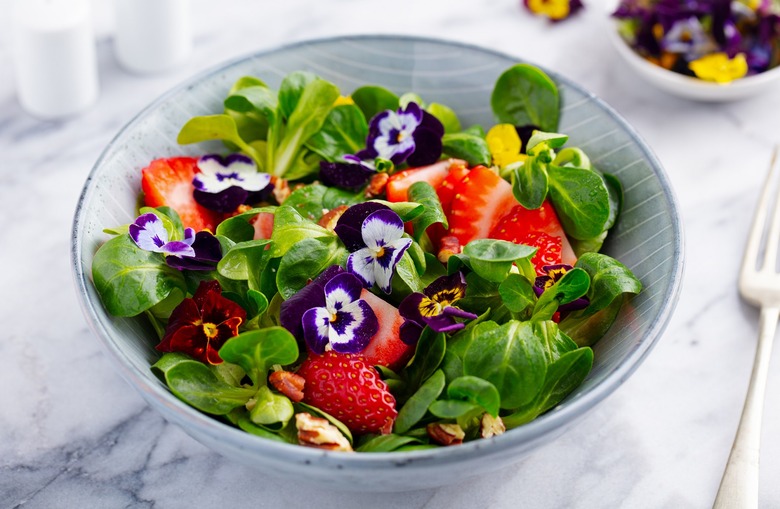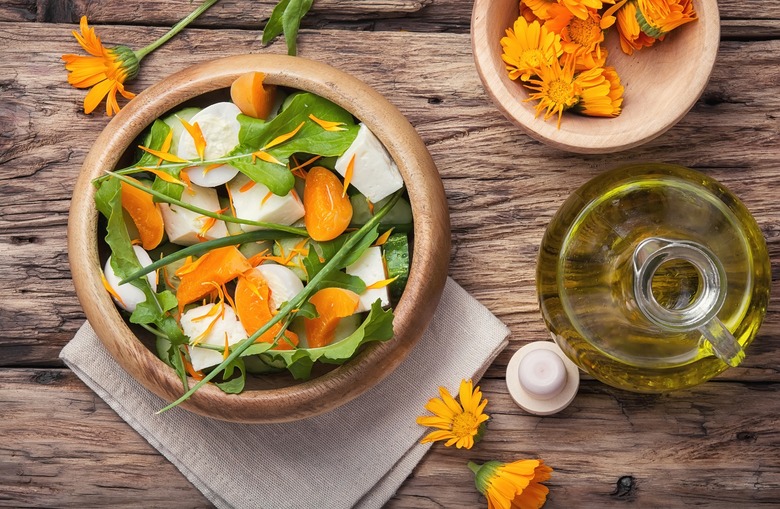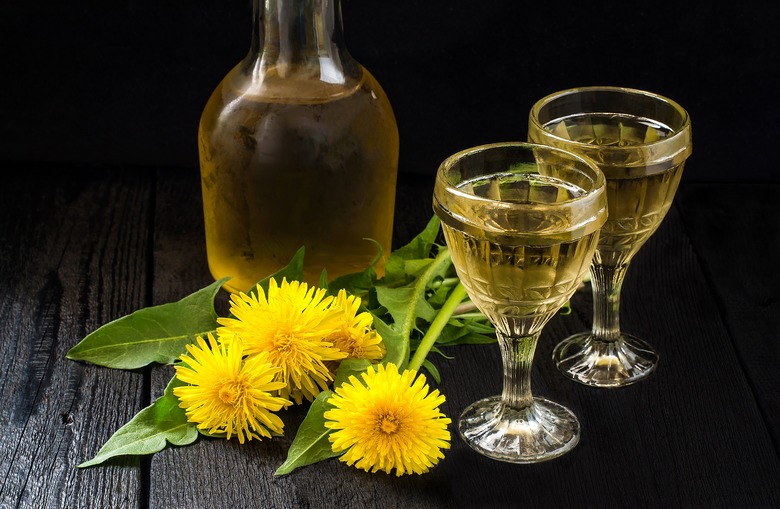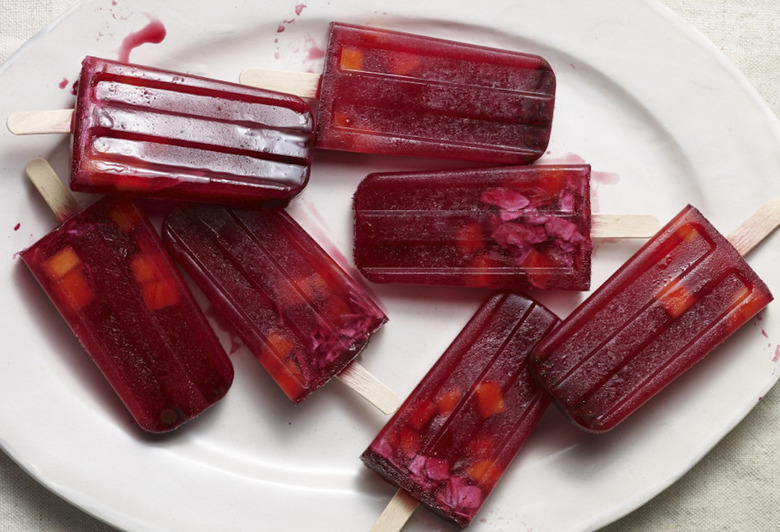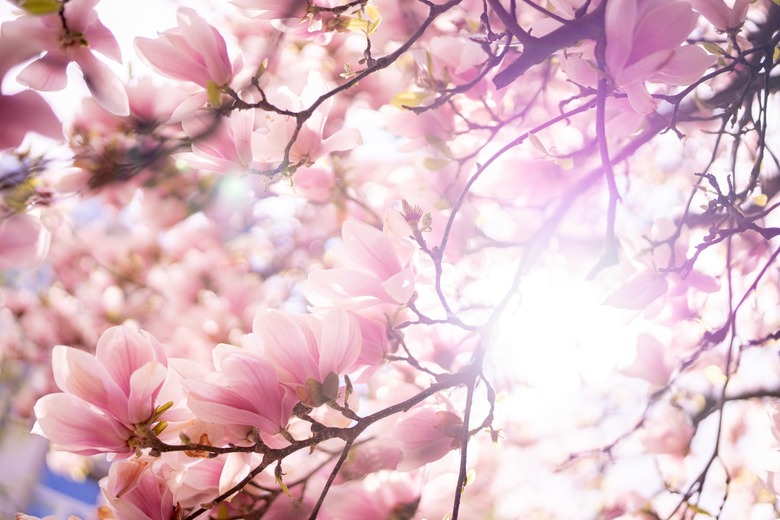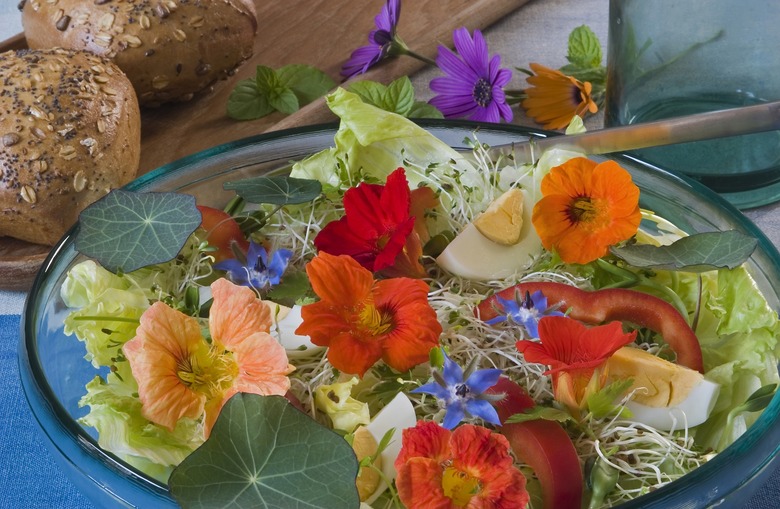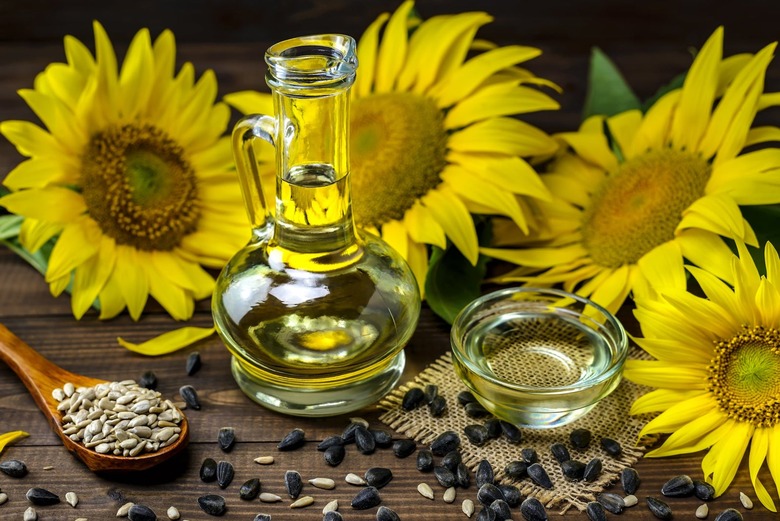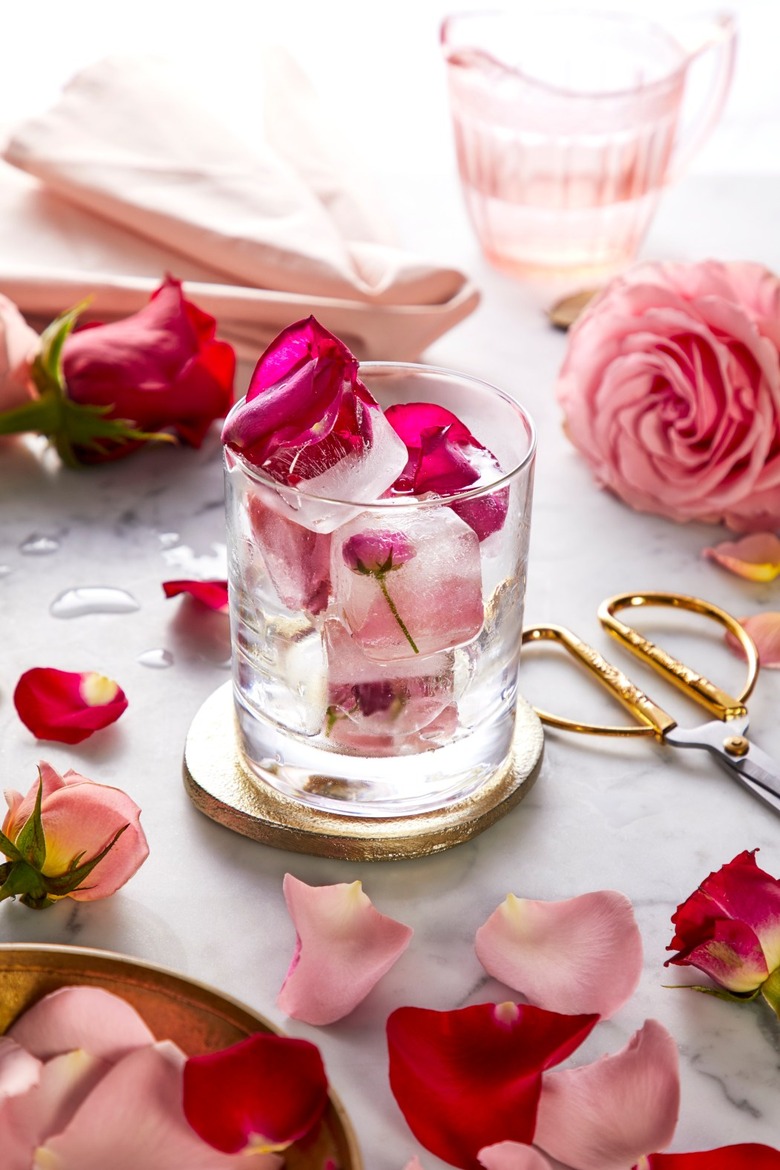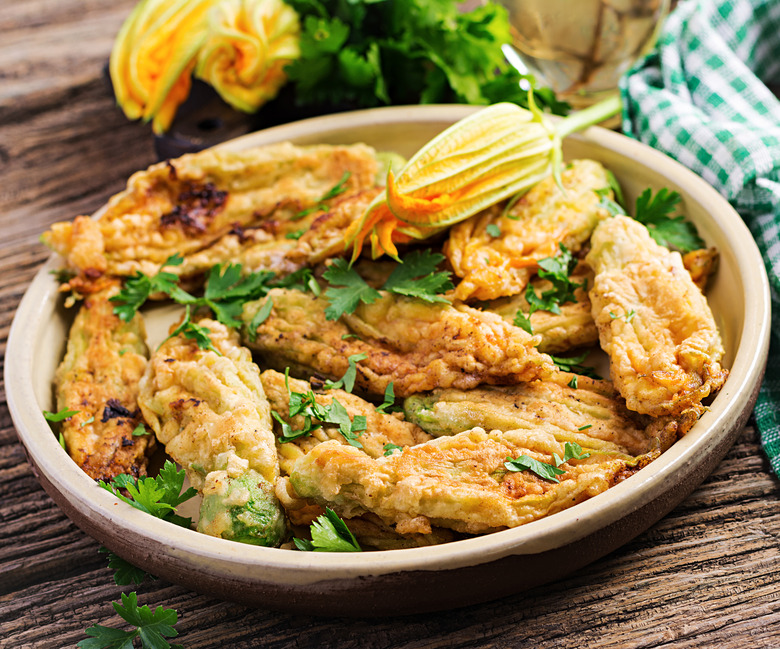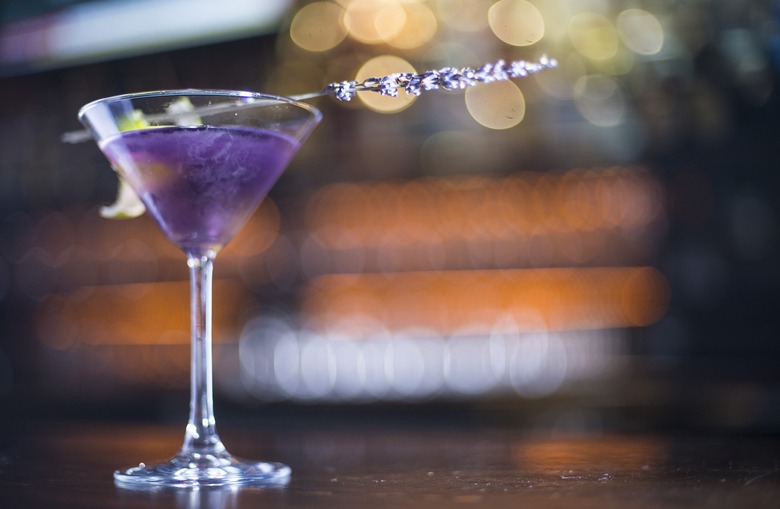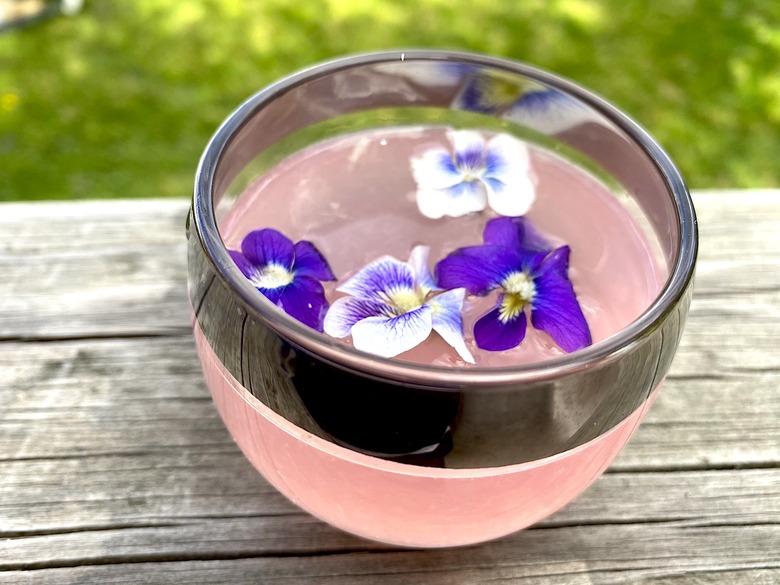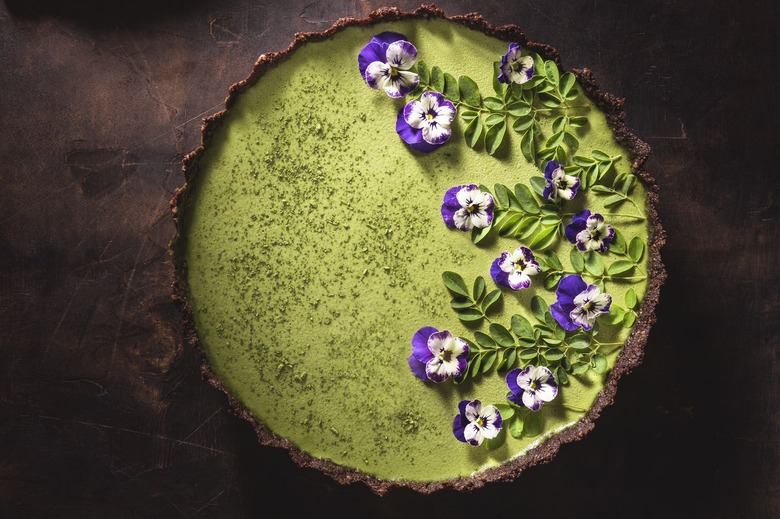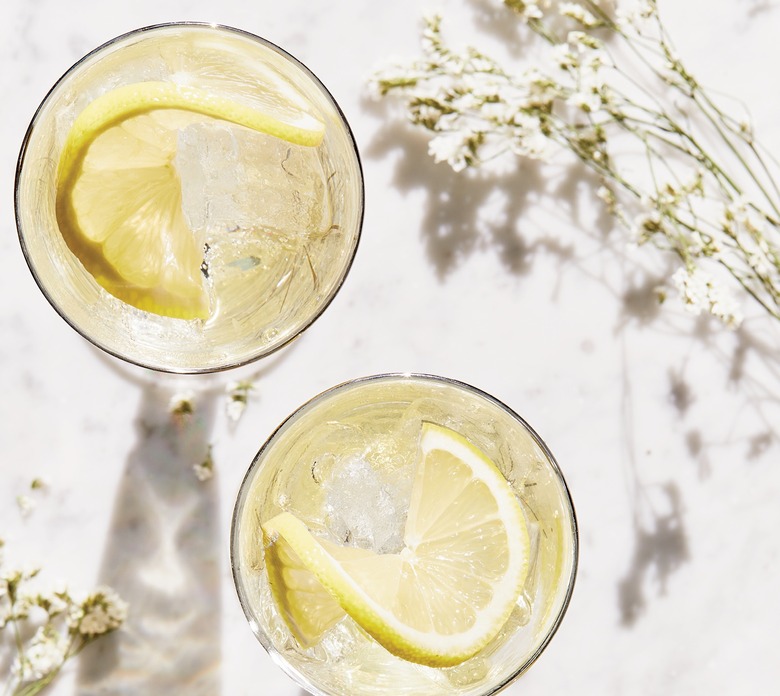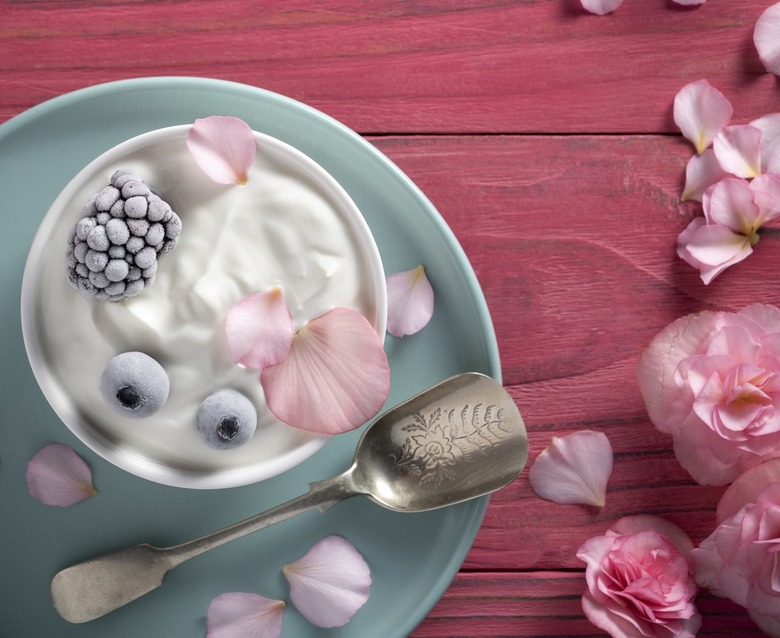Edible Flowers For Cakes, Cocktails, Salads And More
Flowers can light up any room simply with their bright colors and pleasant scent. But there is more to flowers than just beauty. Some flowers are edible and can be used to spice up or sweeten your daily meals. Make more out of your weeknight dinners by adding some fresh petals or create an aesthetically pleasing drink or dessert using beautiful florals for an added pop of color.
If you are picking flowers in your backyard or in the wild, there are a few precautions you need to take. Make sure to do your research beforehand to identify exactly which flowers are edible. For example, though African violets may be similar to regular violets in appearance and name, they are not edible.
Research how to prepare your flowers because certain flowers can be eaten raw while others must be cooked before they're consumed. Don't harvest edible flowers or weeds if you treat your garden with pesticides that aren't labeled for use on food products. If you plan on foraging outside of your own yard, ask for permission, especially if you're picking from someone else's garden or lawn. Avoid foraging in forest preserves, where the practice is often illegal. Finally, it's a good idea not to eat flowers you get from florists, nurseries or roadside stands since they have been raised to look pretty, not be safe to consume.
Calendulas
Calendulas are sometimes called pot marigolds but don't confuse them with true marigolds. They are not the same flowers — calendulas are edible flowers, while not all marigolds are edible. Calendula flowers have a slightly peppery flavor and are called "poor man's saffron" due to their ability to add a golden hue to foods. The petals of the flowers make a bright addition as a garnish in your salads or to add flavor to soups. The leaves are also edible and can be eaten raw. They will also make a refreshing addition to your salads or favorite egg recipes.
Dandelions
Dandelions are likely one of the most common weeds in your yard but don't just brush them off as a nuisance. From petals to roots, the entire plant is edible and can be prepared in different ways. The flowers have a sweet honey-like taste that can be infused in honey, syrup, ice cream and more. You can also make dandelion wine by boiling the flower petals and a few greens mixed with citrus juices, sugar, wine yeast and yeast nutrient or cornmeal, then let the wine ferment for a year or so. The leaves of dandelion greens, packed with nutrients, are slightly bitter in taste but you can toss them into a salad mixed with other greens or add them to a simple stir fry, greens and potato frittata or pasta. For a special meal, swap in dandelion greens in this arugula and pancetta pizza recipe and serve it alongside a refreshing Pineapple Turmeric Mocktail with Muddled Dandelion Greens. The roots can create a cleansing and detoxifying tea to help your body feel as good as new.
Hibiscus
If you enjoy hibiscus tea, then you'll love the other ways of incorporating this edible flower into your food. Every part of this big tropical flower is edible. Calyxes, those little leaves underneath the flower, are the main ingredient used to brew tea. This part of the flower has a tangy taste that could also be used to make jams and sauces. Use hibiscus' large leaves to brew tea or add them to salads. The next time you're making yourself a cocktail or sangria at home, drop in a couple of dried or fresh hibiscus blossoms; a refreshing drink made with wine, vodka, fruit and dried hibiscus is vin de maison. We also love colorful hibiscus and mango popsicles in the summer. This flower is filled with vitamin C and contains some health benefits that can help with high blood pressure, stomach problems and more.
Magnolias
Magnolia trees, which thrive in the southern United States but can be found across the country, are one of the first trees to bloom in early spring. Magnolias' edible petals have a delicate gingery flavor, which is a great addition to salads and soups. In many parts of the world, pickled magnolia petals are a popular preparation; the taste is similar to the pickled ginger that comes with sushi. Furthermore, you can simmer the petals with sugar and water to make a delightful magnolia syrup, which can be drizzled on pancakes or mixed with gin and lemon juice for a magnolia cocktail. The leaves can also be a substitute for bay leaves.
Nasturtiums
All parts of the nasturtium plant are edible to use in your cooking. The leaves and flowers both have a spicy, peppery flavor to them, which you can use to add pep to your salads with other leafy greens and vegetables. If you chop up the leaves and flowers, you can make a homemade vinaigrette, sauces or even an exquisite goat cheese and nasturtium ice cream. You can also use the flowers as decoration for your dish. Much like squash blossoms, nasturtiums can also be stuffed with a variety of cheeses and then deep fried.
Sunflowers
You may already know that sunflower seeds are edible and can add extra crunch to your dishes —as in these cinnamon meusli pancakes — or be used to make oils, but you can also eat other parts of this bright flower. The buds of sunflowers are edible and taste like artichoke when lightly steamed or blanched. They also taste great when tossed in butter and other seasonings to create a simple side dish. The petals of this flower can be eaten raw and have a tasty bittersweet, nutty flavor while the earthy tasting leaves can be boiled, sauteed or steamed.
Roses
The petals of roses are the only part of the flower that is edible. They have a very floral and slightly sweet taste, much like their scent. Rose petals can be infused in jams and jellies. Rose petals are also used to make rosewater, a common flavoring for desserts across North Africa, the Middle East and the Mediterranean. They can also be added to ice cubes for rose petal vodka or other cocktails for a romantic presentation.
Zucchini blossoms
Unlike other edible flowers, zucchini blossoms don't have a floral taste. Instead, this plant has a delicate squash-like flavor and can be prepared in a variety of ways. The most common way is stuffed with cheese and deep-fried — like these incredible ricotta stuffed zucchini blossoms —and served as a tasty seasonal appetizer. You can also use shredded zucchini blossoms to serve in pasta, on top of pizza or stuffed inside quesadillas.
Lavender
Although lavender is most commonly known for its distinct smell and uses in essential oils or soaps, but lavender is also edible. You can use the bits of leaves and stems in tea but they carry a bitter taste if you eat them raw. However, you can still use chopped or shredded leaves to add depth to meat and vegetable dishes. Once cleaned, the flower buds can be dried and used to add a floral note to desserts like sugar lavender cookies or meyer lemon lavender bars or to complement other herbs, such as rosemary and thyme. Lavender bitters and dried lavender are also lovely additions to mocktails and cocktails like the pretty lavender blue cocktail. A pinch of lavender is all you need to add to your cooking, otherwise, you may get that overwhelming soap taste, so use lightly.
Violets
Violets, those purple wildflowers growing in your lawn or local park in the spring, taste as great as they look. This edible flower has a sweet floral scent and flavor. Both the petals and leaves are edible and are packed with high amounts of vitamins C and A. The purple petals can be steeped in hot water and used to add a splash of color and light floral flavor to cocktails or pretty pink violet lemonade. Make your own homemade creme de violette by infusing petals into sugar and vodka, then make the best homemade aviation cocktails ever. Violets also make beautiful garnishes for salads, soups and baked goods. You can also make candied violets by drying the petals and coating them with egg whites and superfine sugar.
Pansies
A member of the viola family-like violets, the flowers of pansies can be eaten raw but make sure to cut off the stems because they're not edible. These fresh flowers have a slightly spicy lettuce taste that goes well in salads and make gorgeous garnishes for both savory and sweet dishes. If you want to step up your cake-decorating skills, try adding some candied pansies on top.
Elderflowers
You may recognize elderflower as an ingredient to make liqueur used for cocktails like the spring fling and elderflower spritz. But there are other ways of using this edible flower. Only the berries — known for their immune-boosting properties — and flowers are edible, and don't try eating this plant raw because it's mildly toxic. However, when cooked, elderflowers carry a sweet floral taste with a hint of pear and lychee notes. You can use this flower to upgrade your spring cocktails, but it is also good to make teas, simple syrups and baked goods — Prince Harry and Meghan Markle's wedding cake was famously flavored with elderflower.
Begonias
Give your food an aromatic bonus by adding begonias. The flowers, leaves and stems are all edible. There are two types of begonias: tuberous and wax. Do note that tuberous begonias contain oxalic acid, which should be avoided by individuals who suffer from gout, kidney stones or rheumatism, so be careful when buying these. You will get a slightly bitter, citrus flavor from begonia blossoms that will look and taste amazing in salads or yogurt. If you're not lucky enough to catch rhubarb during its peak season, the stems of begonias can be a substitute. There are two types of begonias: tuberous and wax. Tuberous begonias contain oxalic acid, which should be avoided by individuals who suffer from gout, kidney stones or rheumatism, so be careful when buying these. The next time you invite your friends or family over to eat, think about adding some edible flowers to your dishes for an impressive dinner or spring brunch for any occasion.
More from The Daily Meal:
No-Cook Side Dishes for Summer Barbecues and Weeknight Dinners
20 Healthy Smoothie Recipes That Taste Great
High Protein Breakfasts That Aren't Eggs
The 12 Essential Ways to Cook an Egg
What's in Season in Spring: Asparagus, Spinach, Peas and More
